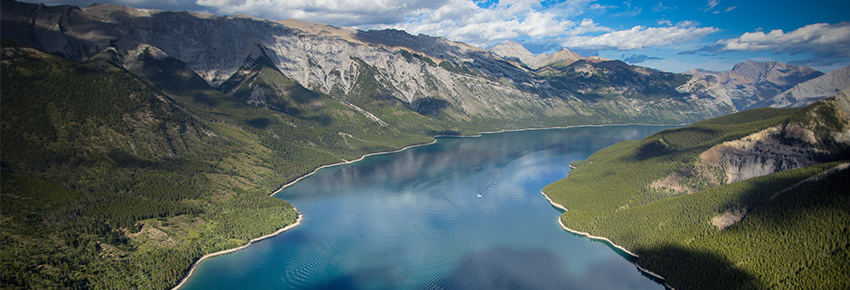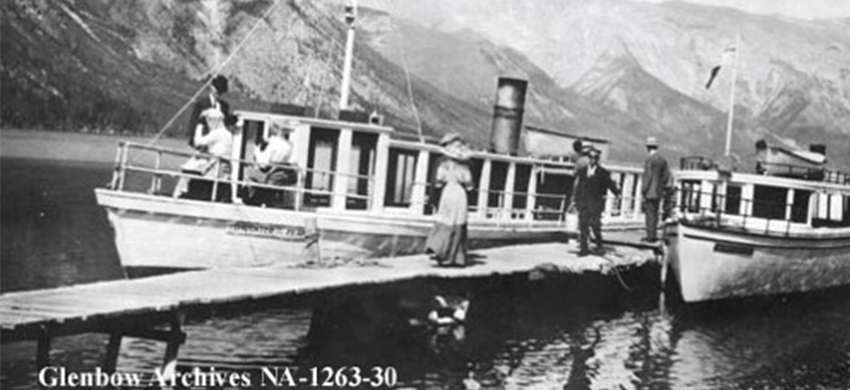
© Banff & Lake Louise Tourism / Paul Zizka Photography
History of Lake Minnewanka
Banff National Park
The spirit of Minnewanka
For more than 100 centuries, people hunted and camped along the original shores of Lake Minnewanka. The Stoney people called it “Minn-waki” or “Lake of the Spirits”. They respected and feared this lake for its resident spirits. The Early Europeans called it Devil's Lake.
Minnewanka landing
In 1886 the “Beach House”, a log hotel, was built along the original shores of Lake Minnewanka. By 1912, a summer village called Minnewanka Landing was established.The townsite consisted of four avenues and three streets. There were hotels, wharves, restaurants and sailing tours aboard two cruise boats - “Lady of the Lake”, and “Daughter of the Peaks”.
Rising waters
Scuba divers are the only ones to visit Minnewanka Landing now as it is all under water. The lake was first dammed in 1895 to improve the boggy shoreline for boating. It was dammed again in 1912; this time to store water for a downstream hydro-electric plant on the Cascade River.
Construction of the final dam occurred in 1941 after a twenty-year struggle between advocates of power development and those pressing for protection of park resources. It was approved in 1940 by the Canadian government under the War Measures Act, which temporarily suspended the 1930 National Parks Act which excluded industrial development from national parks.
Minnewanka today
National parks today protect landscapes of natural and cultural significance. Although the lake has seen many changes over the past century, people continue to seek out its wild nature and hidden mysteries. The spirit of Lake Minnewanka lives on.
Chronology
1888:Townsite of Minnewanka Landing established.
1895: First dam built by Federal Government to improve Lake Minnewanka's boggy shoreline.
1912: Second dam built by Calgary Power Co. for water storage for Horseshoe Falls Power Plant.
1922: Coal community of Bankhead abandoned. The Bankhead Steam Power Plant, which had provided electrical service to Banff and area, is closed.
1923: Cascade Power Plant and three employee residences constructed to replace the Bankhead Steam Power Plant.
1930: National Parks Act passed - bans all forms of industrial development within Canada's national parks.
1940: Canadian government approves, under the War Measures Act, Calgary Power Co.'s application to dam Lake Minnewanka for a power source for Canada's war effort and for southern Alberta
1941: Third and present dam built by Calgary Power Co. - includes: causeway, powerhouse, woodstave pipeline and surge tower. Cascade Power Plant abandoned.
 © "Daughter of the Peaks" - Glenbow Museum Archives - NA-1263-30
© "Daughter of the Peaks" - Glenbow Museum Archives - NA-1263-30
- Date modified :